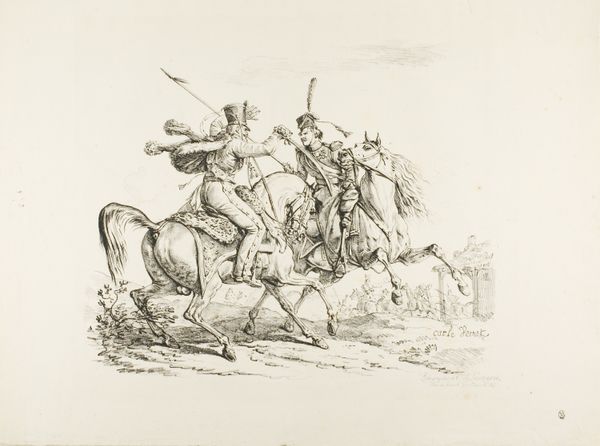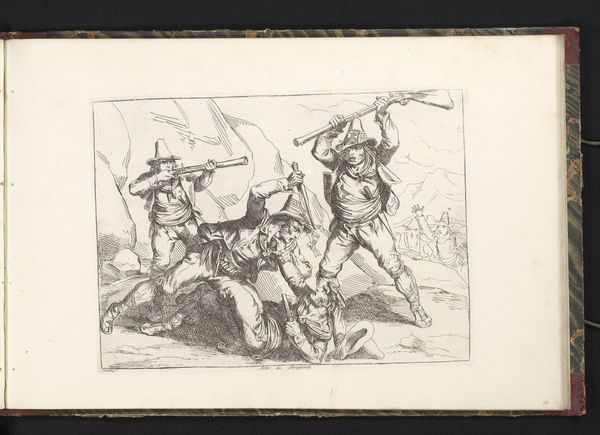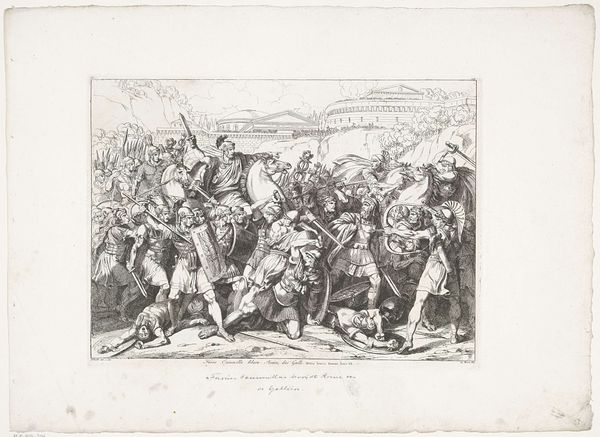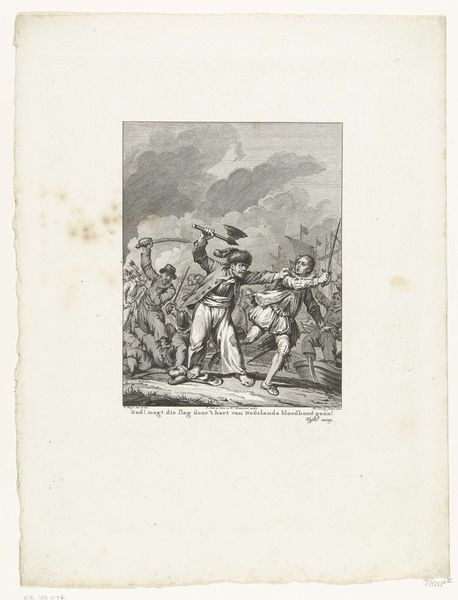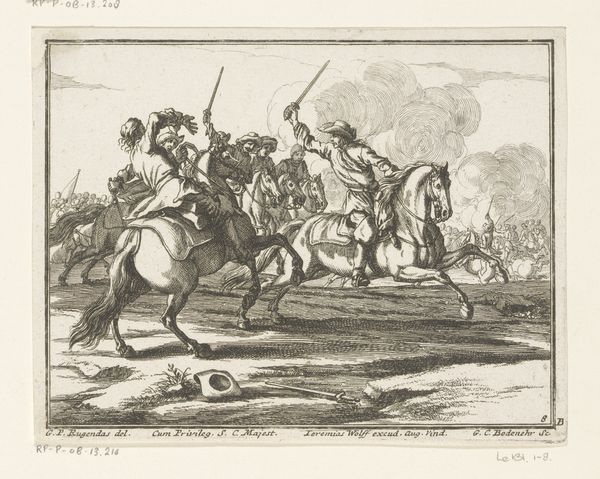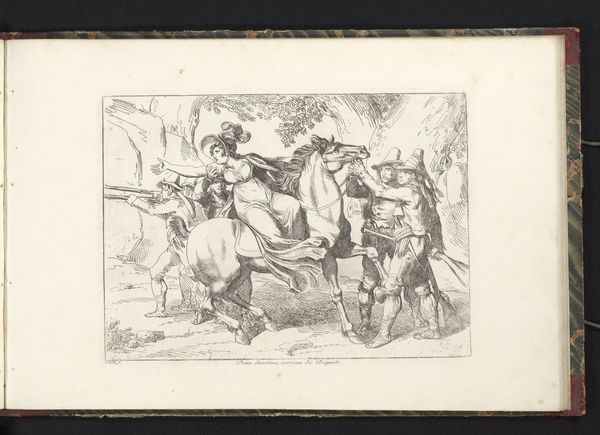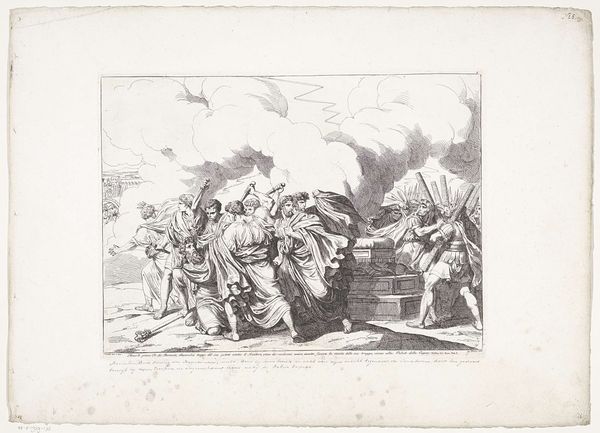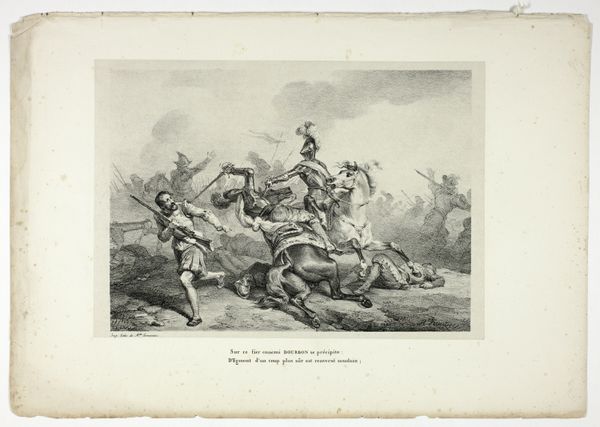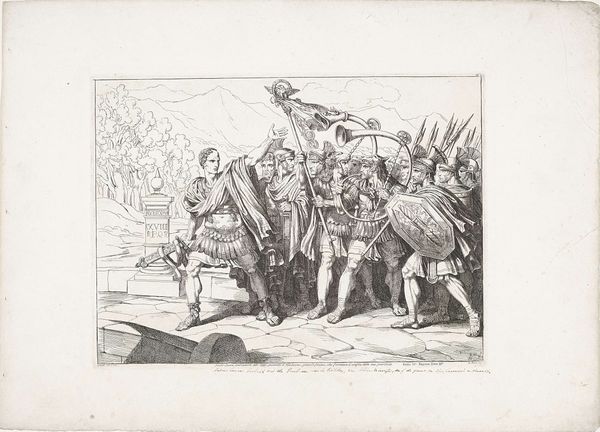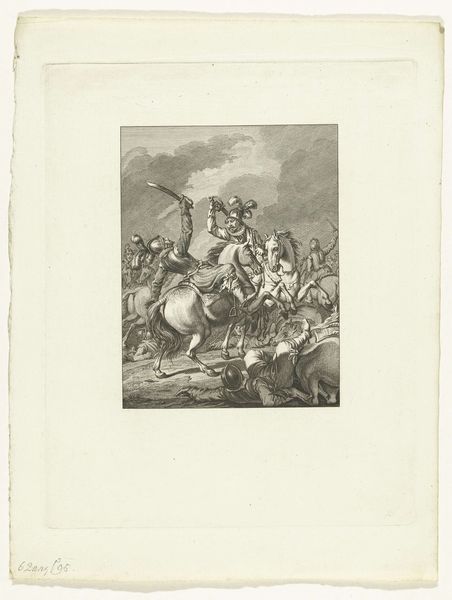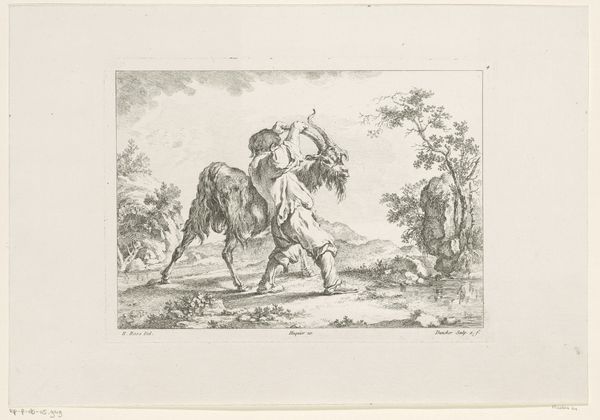
engraving
#
old engraving style
#
figuration
#
romanticism
#
history-painting
#
engraving
Dimensions: height 316 mm, width 426 mm
Copyright: Rijks Museum: Open Domain
Curator: Immediately, I'm drawn to the chaotic energy of this scene! The frantic horses, the clashing figures – it feels very dynamic, even within the limitations of an engraving. Editor: That’s "Strijd tussen Brutus en Arruns Tarquinius" by Bartolomeo Pinelli, created in 1817. As you mentioned, it’s an engraving. Pinelli, a notable figure in the Roman art scene, was known for his depictions of historical and mythological subjects. He masterfully utilizes line to capture the intensity of this very specific moment. Curator: An engraving from 1817… Interesting. Considering the context, Romanticism was blooming. This battle scene seems to feed right into the drama and emotional intensity that period craved. But look closer – it’s not just about aesthetics, it’s about how this historical imagery shaped public understanding of Roman history and virtues. Editor: Indeed. And examining the actual process of engraving – the labor involved in meticulously carving these lines into the copper plate – tells us about the printmaking industry at the time. Prints like these allowed for the widespread dissemination of classical narratives, shaping and informing popular taste on an industrial scale. It really made high art accessible. Curator: Precisely. These prints were accessible objects circulating in society, constantly reinforcing certain narratives. The political function of such imagery needs emphasis. They served as more than simple decorations; they propagated certain ideas about republican virtue and its struggles against tyranny. Editor: Yes. What strikes me is how an engraving like this serves almost as a historical document, yet it’s inherently an interpretation, molded by the artist’s hand and the socio-political pressures of the time. Pinelli, operating within that 19th-century context, chose to highlight this specific clash between Brutus and Arruns to express these particular themes. Curator: It underscores the importance of looking beyond the immediate image and diving into the methods of its making, to comprehend its place within its social framework. Editor: Absolutely, by acknowledging the artist's contribution and its circulation and consumption we avoid essentializing history as pure fact and allow it to exist in a fascinating artistic interpretation of materials, dissemination, and audience consumption. Thank you. Curator: Agreed. A look at art as it functions.
Comments
No comments
Be the first to comment and join the conversation on the ultimate creative platform.
